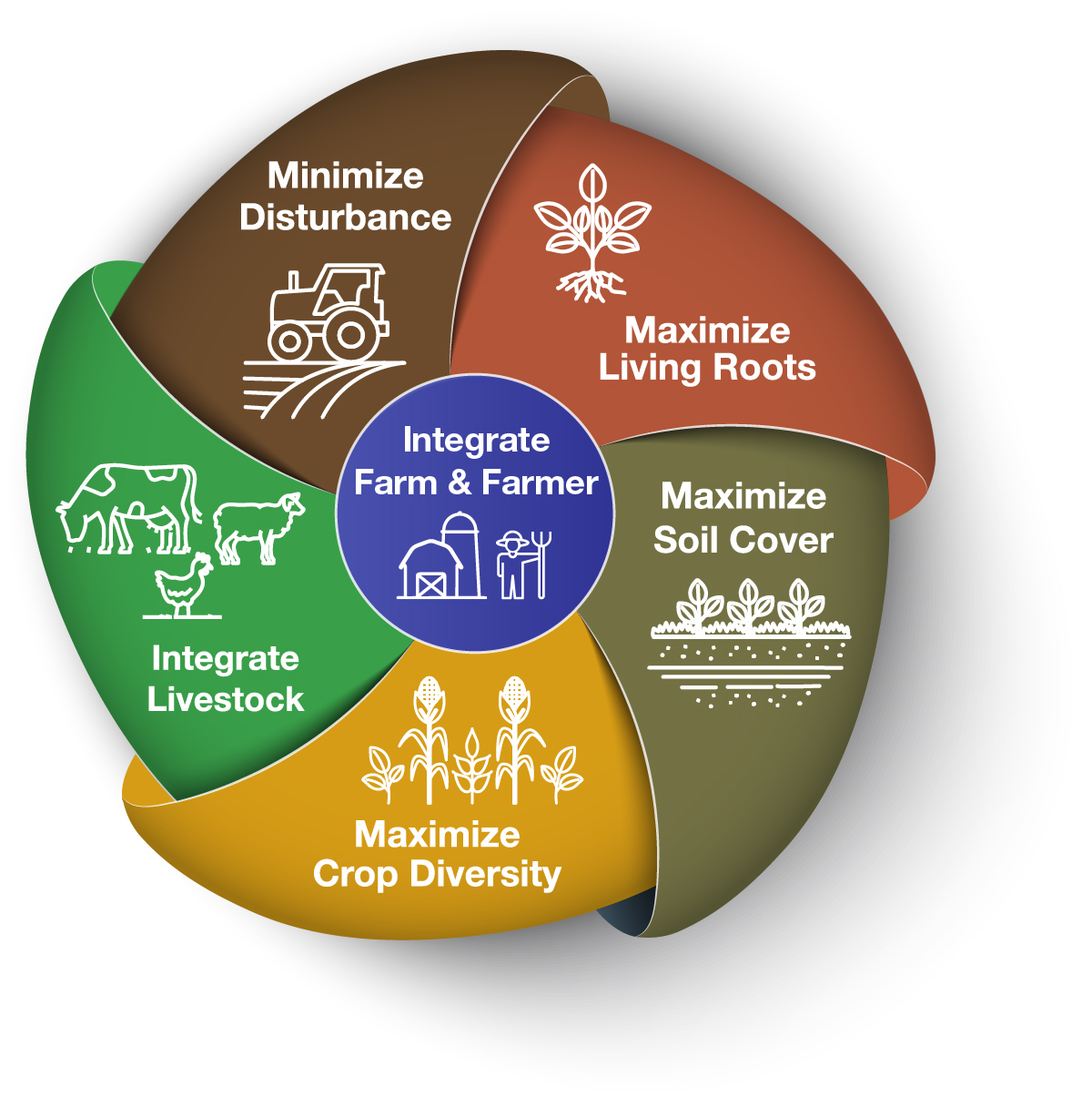Our soil is a vital living ecosystem. As the Natural Resource Conservation Service (NRCS) states, soil health provides the framework to provide “the continued capacity of soil to function as a vital living ecosystem that sustains plants, animals, and humans. Healthy soil gives us clean air and water, bountiful crops and forests, productive grazing lands, diverse wildlife, and beautiful landscapes.”
Soil Health is accomplished by implementing the Principles of Soil Health. Refer to the Producer-Led Watershed Protection Grant program for examples of ways these principles are being implemented on farms throughout Wisconsin.
Principles of Soil Health

The principles of soil health are:
- Maximize Soil Cover
- Maximize Presence of Living Roots
- Maximize Crop Diversity
- Minimize Disturbance
- Integrate Livestock
- Integrate Farm & Farmer
According to NRCS, soil does all this by performing five essential functions:
- Regulating water
Soil helps control where rain, snowmelt, and irrigation water goes. Water flows over the land or into and through the soil. - Sustaining plant and animal life
The diversity and productivity of living things depends on soil. - Filtering and buffering potential pollutants
The minerals and microbes in soil are responsible for filtering, buffering, degrading, immobilizing, and detoxifying organic and inorganic materials, including industrial and municipal by-products and atmospheric deposits. - Cycling nutrients
Carbon, nitrogen, phosphorus, and many other nutrients are stored, transformed, and cycled in the soil. - Providing physical stability and support
Soil structure provides a medium for plant roots. Soils also provide support for human structures and protection for archeological treasures.
DATCP supports soil health through providing: